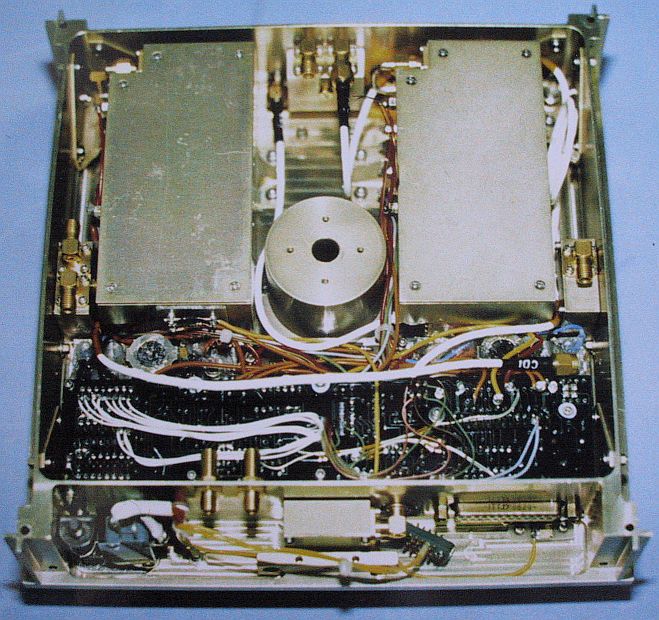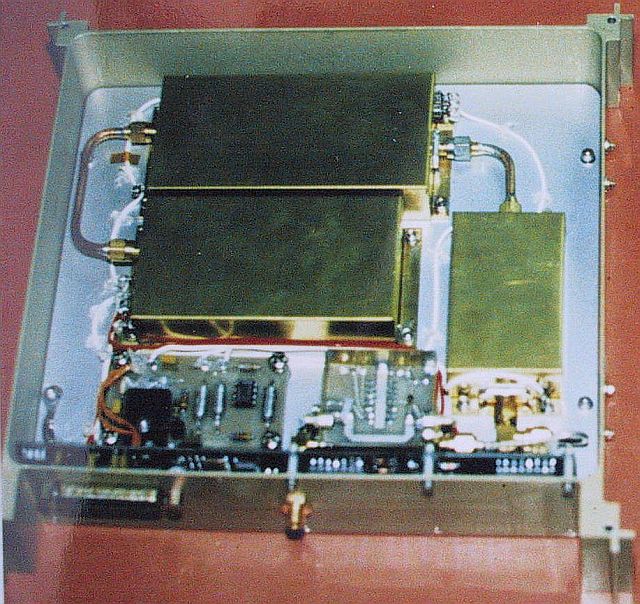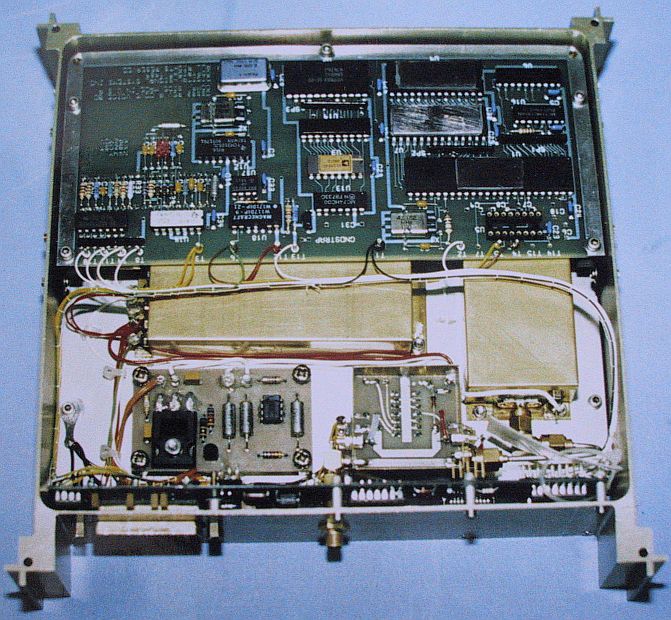
The Microsat VHF, UHF and S-band transmitters
Matjaž Vidmar, S53MV
As a postgraduate student on a Fullbright scolarship in Boulder, Colorado, USA, I had the opportunity to meet Jan King, a famous builder of amateur-radio satellites. Jan asked me to build the transmitters for his new spacecraft named "Microsat".
The Microsats were supposed to very small, weighing only about 10kg. Therefore high-efficiency transmitters were required due to the limited available electrical power, providing useful communication in the 2m, 70cm and 13cm ham-radio bands.
The first prototypes were built in fall 1988 and the results were quite encouraging, up to 84% power efficiency at 145MHz:

The main UHF transmitters operated on 437MHz in two different modes: straightforward BPSK and raised-cosine BPSK for spectrum shaping. The output power was adjustable in 16 steps reaching a maximum power of 4W with a DC-to-RF efficiency of 75%.
Each Microsat was made from five modules stacked into a cube. Two such 437MHz BPSK transmitters were located in the bottom module together with some control electronics:

Every Microsat had at least one module dedicated entirely to experiments. A 1W S-band BPSK transmitter on 2.4GHz was developed for the PACSAT AO-16 experiment, achieving a DC-to-RF power efficiency of 50%:

A similar S-band transmitter on 2.4GHz was also installed on the DOVE DO-17 satellite, together with the VOTRAX speech synthesizer:

The modules for all four Microsats: PACSAT AO-16, DOVE DO-17, WEBER WO-17 and LUSAT LO-19 are shown on the following picture:

The four Microsats were installed on the adapter of the Ariane rocket together with two slightly larger UoSATs:

The main payload was the much larger SPOT-2 satellite, installed on top of the adapter. All seven satellites were successfully launched on January 21st, 1990. The transmitters onboard the Microsats operated flawlessly for more than 10 years in space.